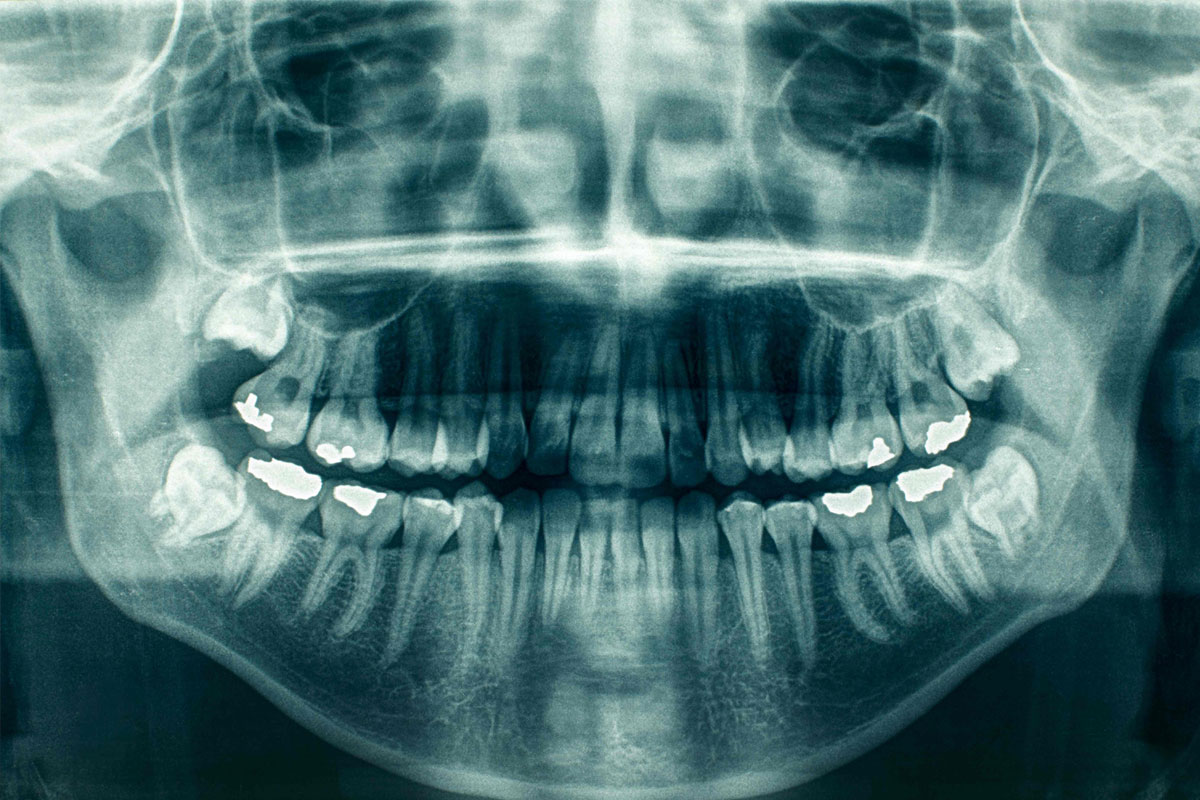You might be familiar with dental X-rays wherein the dentist places a piece of plastic inside your mouth for you to bit down on and takes multiples images that show one or a couple of your teeth. This is just one type of X-ray. There are many others, one of them being a panoramic dental X-ray. This type of X-ray captures your entire mouth in a single image. Find out what exactly panoramic dental X-rays are and how useful they can be!
Why Use a Panoramic X-Ray?
A panoramic dental X-ray creates an image of your entire mouth, including the upper and lower jaws, all the teeth, temporomandibular (TMJ) joints, and even your nasal area and sinuses. This makes it possible for your dentist to notice any of the following problems:
- Bone abnormalities
- Fractures
- Cysts
- Impacted teeth
- Infections
- Tumors
A dental professional may also ask you to take a panoramic dental X-ray to plan treatments like braces, implants, or dentures.
Another advantage of this type of X-ray is that it creates a flat representation of your jaw’s curved structure, making it easy for your dentist to analyze every part.
How Do Panoramic X-Rays Work?
Unlike traditional X-rays like bitewing X-rays, panoramic dental X-rays are extraoral, meaning the imaging machine is outside of your mouth. So how does it work? According to RadiologyInfo.org by the Radiological Society of North America, the X-ray tube rotates in a semicircle around your head, starting at one side of your jaw and ending on the other. Instead of relying on film placed inside your mouth, the X-ray technician will direct the X-ray machine to project a beam through your mouth onto a film that’s rotating opposite the X-ray tube.
The X-ray lasts between 12-20 seconds, so it’s quite easy to perform. In preparation for the procedure, the dental technician will ask you to remove any metal objects such as jewelry. You will be asked to stand or sit in the center of the unit, where the technician will carefully position and secure your head, and then place a bite-blocker in your mouth to ensure your teeth are correctly aligned. You will also be asked to wear a leaded apron to protect the rest of your body during the procedure.
Benefits and Risks of Panoramic Dental X-Rays
The most significant benefit of panoramic dental X-rays is that they provide a comprehensive view of your entire mouth very quickly.
That said, according to the American Dental Association, while the radiation exposure from a traditional intraoral X-ray (like a bitewing X-ray) is only 0.005 millisieverts, the exposure from a panoramic X-ray is about 0.01 millisieverts. While a panoramic dental X-ray is still perfectly safe, don’t hesitate to talk to your dentist if you have any concerns about taking one.
If you or your child need braces, or if you have an impacted tooth, a panoramic X-ray can be invaluable. Now that you’re armed with all that you need to know about this type of X-ray, you’re well-equipped to face any dental problem you might have and go back to smiling again!







